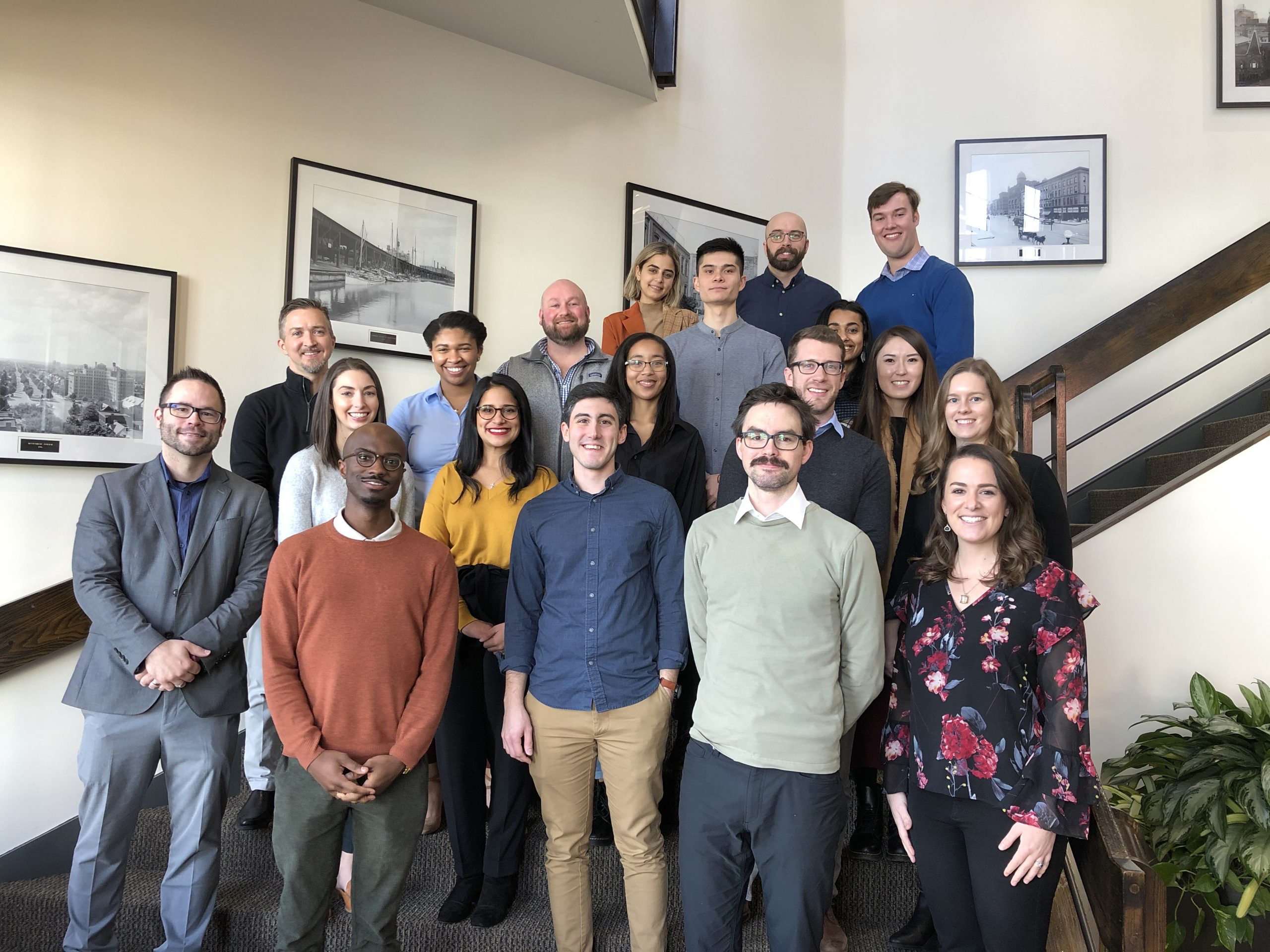
AIA Virginia’s award-winning Emerging Leaders in Architecture (ELA) program was developed in 2009 to jump-start the careers of young professionals. Conceived of and lead by a passionate steering committee of successful architects (now ALL past ELA alumni!), the program was designed to share the things they wished they had learned in architecture school.
Each of the seven day-long-sessions focuses on developing essential skills like financial management, communication and negotiation, advocacy and public service, and much more.
Want to be a member of this elite group of leaders? The application for the 2021 class will be available later this summer. Contact Cathy Guske for information on how to nominate an emerging leader or with any questions about the program.
We asked members of the ELA class of 2020 the same five questions. Here are their inspiring answers.
Ariana Arenius, AIAS
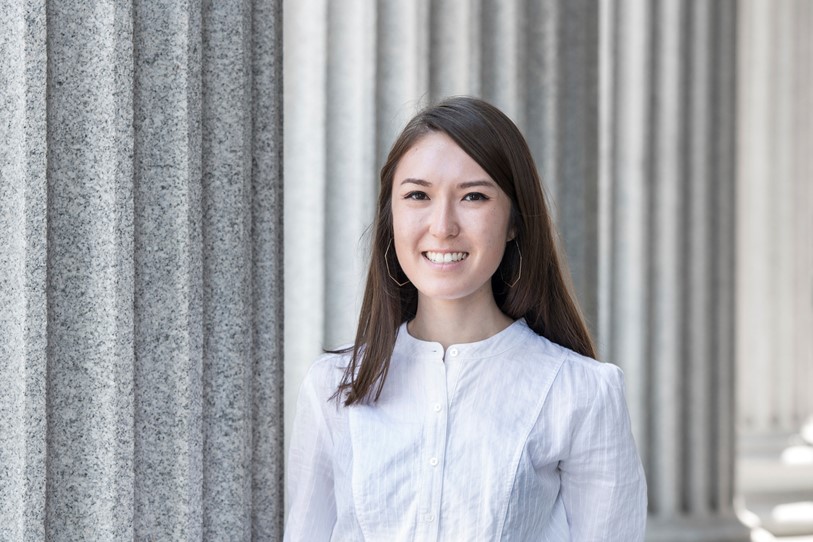
What building evoked a strong reaction from you recently—either positive or negative?
Last Fall, I studied abroad in Barcelona and fell in love with the courtyard of a museum called the Centre de Cultura Contemporània de Barcelona. One of the facades is filled with windows, reflecting the courtyard and parts of the city. It was great to see people using this courtyard in different ways, people using the facade as a mirror and practicing dance moves, and others enjoying a meal with a friend. It was a unique moment of how people use public spaces, something that I’ve been learning more about as I study architecture.
What is the last book you read?
I’ve started reading a book called X-Ray Architecture by Beatriz Columina. She’s an architectural historian who is currently teaching at Princeton and came to UVA as a guest lecturer this past February. Her research and analysis dives into the role of healthcare and its influence on architecture in the 20th century, something that feels surprisingly relevant to what we’re experiencing now during and what may follow after Covid-19.
How did you discover your passion for architecture?
Since I was young, I had always been interested in architecture, but never knew exactly why. I found myself sketching buildings, but didn’t know anything beyond what I would see outside. Once I came to college and began studying architecture, I was drawn to architecture as a tool for crafting design while also addressing many of the issues we face today. It has an amazing ability to bring people together, to capture moments of history, and to propose new ways of thinking about our world.
What is your favorite thing to do to relax?
When I’m not trapped in the studio, I enjoy spending time outdoors (hiking, playing tennis, going for walks and runs). Since I was in middle school, I loved taking photos and have recently taken up film photography. Above all else, it’s always relaxing to watch a movie or tv show from my never-ending list of things to see!
What advice do you have for aspiring architects?
As an aspiring architect myself, I can speak to the students who are hoping to pursue architecture. I’m thankful for the opportunities and leaps I took in my undergraduate career, especially with my involvement in AIAS. Take advantage of the career talks and seminars, as well as the networking events that are offered in your school. These helped me strengthen the basic skills of communicating with people, especially with strangers (overcoming this nervousness is key!). Don’t be afraid to reach out and establish connections with the faculty and staff in your school. I’ve learned that they truly are your biggest supporters and want nothing but the best for you.
Paris Casey, AIAS
What building evoked a strong reaction from you recently—either positive or negative?
The Pace Gallery in Hong Kong caught my eye due to its illuminated facade. It sits in a busy street corner and presents itself as a work of art rivaling those that it houses within.
What is the last book you read?
After watching the show on Hulu, I read Little Fires Everywhere by Celeste Ng. I recommend both the show and the novel!
How did you discover your passion for architecture?
My passion was encoded in high school. After taking a technical drawing class on a whim, I decided I wanted to delve deeper into the profession and enrolled in an architecture course the following year. I fell in love with design and the process of creating a building and I’ve been pursuing a career in architecture ever since.
What is your favorite thing to do to relax?
My favorite thing to do to relax is to have sip and paints with my friends. A nice glass of wine while we create some art and have good conversation is always enough for a good time in my book.
What advice do you have for aspiring architects?
My advice is to keep working!! Becoming an architect is no easy feat and the work can be challenging, but at the end of every project I always feel so accomplished and proud. I’m sure that’s what all aspiring architects wish to feel, so just keep pushing and be open to learning.
Christopher Cheng, AIAS
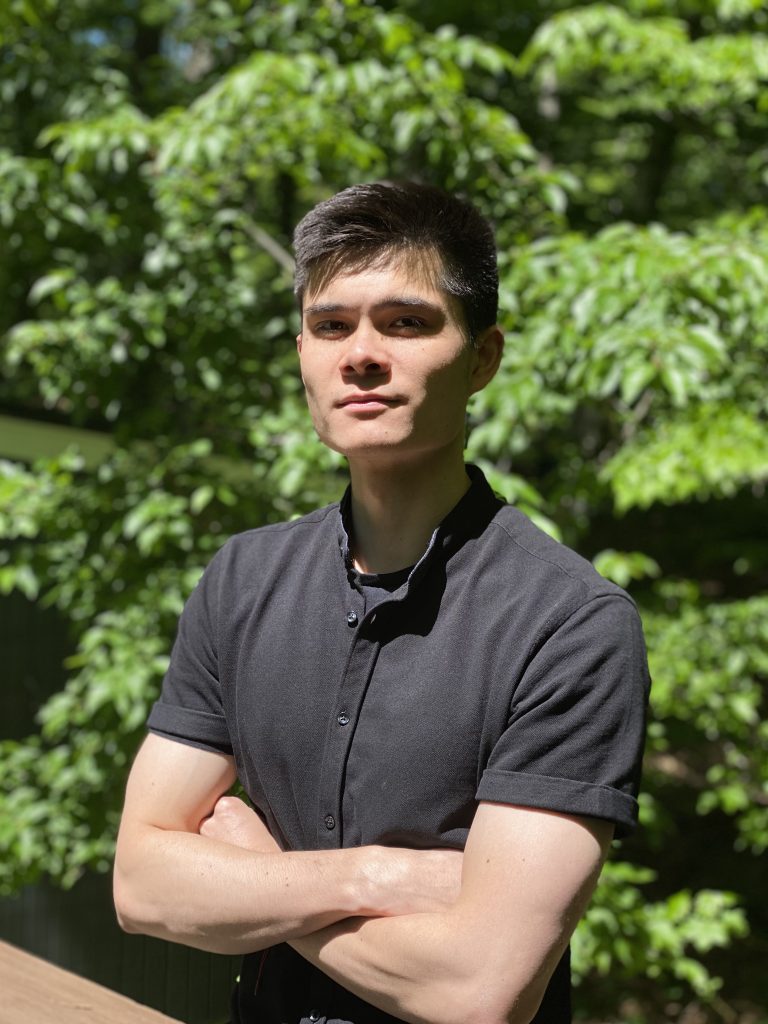
What building evoked a strong reaction from you recently—either positive or negative?
Over the summer I was able to visit the Portland Japanese Garden Cultural Village by Kengo Kuma & Associates. The approach to the project slowly winds up, around, and through the existing landscape to create an appreciation for the subtle integration of the set of buildings into the existing 1960s gardens, blurring the discrepancy between old and new, creating a harmony across time. In addition, each building engages the specific conditions of the site, through deep overhangs and transparent facades to encourage visual connection to the surrounding environment.
What is the last book you read?
Architecture and Disjunction by Bernard Tschumi. I decided to read this book in correlation to my undergraduate thesis as Tschumi explores recent concerns with ideas of ‘event’ and ‘program’ as their roles/relationships have evolved over time.
How did you discover your passion for architecture?
Honestly, I cannot pinpoint the exact moment or year. My grandfather, father, and older brother are all licensed architects, and architecture has been around me my entire life. From an early age, I loved going to the office with my dad and looking through the large sets of drawings, always wanting to help with a sketch or model. With this early exposure, I took an interest and extra appreciation in all things related to design, so naturally, when the time came for college, I instantly decided on architecture.
What is your favorite thing to do to relax?
When I have the time, I love to go on long bike rides without a particular destination in mind, exploring as I ride. It is a good way to just get away with no agenda and get outdoors.
What advice do you have for aspiring architects?
As I wrap up my five years at Virginia Tech I think my advice would be, to always be a sponge both academically and professionally. There will always be so much to learn in the realm of design and the best way to do so is through being proactive, constantly seeking to develop new skills and understanding. Everyone has something different to bring to the table, and it is extremely important to recognize this because curiosity and collaboration will be a benefit to both you and your colleagues.
Amanda Ferzoco, Associate AIA

What building evoked a strong reaction from you recently—either positive or negative?
The Oculus designed by Santiago Calatrava on a recent trip to New York City. The last time I had been in NYC the building was still under construction, and based on the exterior structure that was taking shape I was uncertain if the sculptural form was a bit exaggerated given the solemn surroundings. However, when I returned in November I was awestruck by how elegant the structure was and how it poetically floated on the heavy site. This time I also got to go inside and experience the breathtaking light and scale of the project and just… WOW.
What is the last book you read? (Listened to*)
I am addicted to audiobooks! I am always listening to the autobiographies of people I find interesting, successful, and inspiring. I am currently listening to Becoming by Michelle Obama and I just finished Can’t Hurt Me by David Goggins. Of course, for some heavier reading, the incessant Ballast ARE 5.0 Review Manual is always ongoing in the background.
How did you discover your passion for architecture?
When I was younger, my parents fulfilled a dream of theirs by designing and building a log cabin in the mountains of Maine. Observing the entire process from site selection to construction to handpicking finishes fascinated me and inspired my love for design.
What is your favorite thing to do to relax?
Sit on the beach with a glass of wine, good music, snacks, and a design magazine.
What advice do you have for aspiring architects?
Never stop learning! Education doesn’t end in school, you must continually stay up to date on the new materials, systems, codes, and technologies that are out there. Be proactive and ask questions, attend design lectures, go to learning seminars, and lunch and learns.
Catherine Carlisle Hendrick, AIA
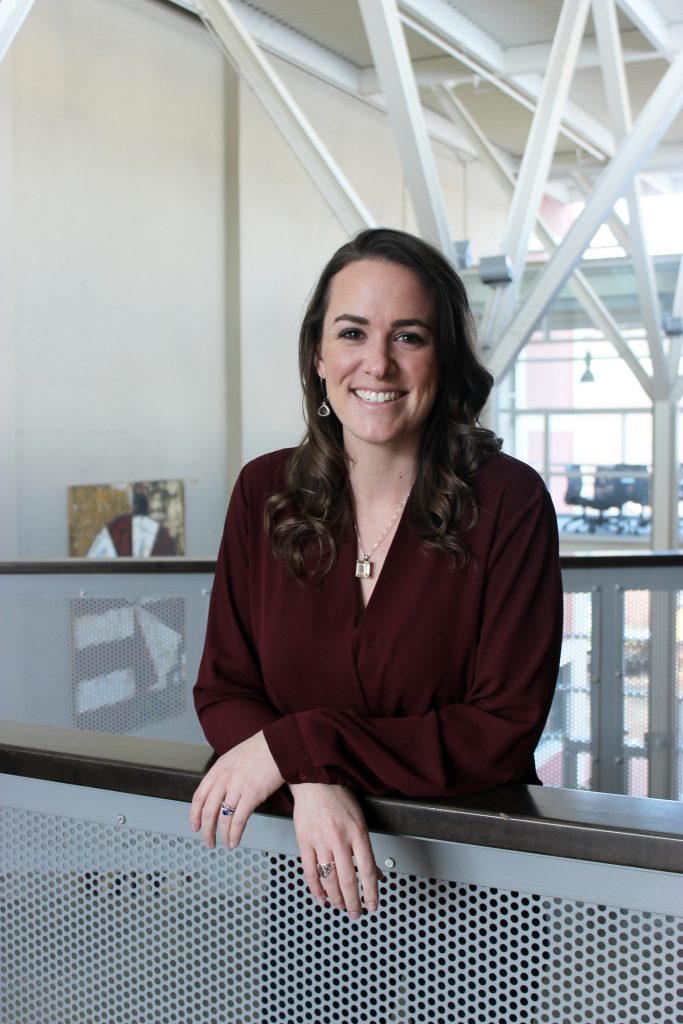
What building evoked a strong reaction from you recently—either positive or negative?
Castello del Balio o Pepoli and the Castello di Venere in Èrice, Sicily. The castles are on top of a mountain surrounded by wine country, overlooking the city of Trapani, and built into the mountainside. The architecture has withstood hundreds of years on top of that windy mountain, and the views are breathtaking.
What is the last book you read?
The Alice Network, by Kate Quinn.
How did you discover your passion for architecture?
My father is a handy-man in his spare time and my uncle was a custom home-builder – both introduced me to the field from the side of construction. My uncle would show me plans and tour me through homes under construction, and I’d get my hands dirty working on projects at home with my dad. My favorite part of my work now is observing the construction process and the client’s reaction to their new space that we get the privilege to work with them to design.
What is your favorite thing to do to relax?
I love to knit to be able to truly turn off my brain and remove my hands from my mobile device! That combined with a nice cup of tea and my cat or dog snuggled up in my lap is a great way to slow down. I also enjoy painting, whether with acrylic, watercolors, or oil paint. When we finally are not in quarantine, I’ll enjoy spending time with friends and family, playing board games, and visiting local breweries.
What advice do you have for aspiring architects?
Find ways to challenge yourself outside of design, whether it is taking a business course or diving deeper into an area of engineering. Being knowledgeable in fields that are not directly related to the design portion of our profession can create opportunities to better communicate and collaborate. In the long run, this can create even better architecture. Also – live a little! Take stock in time outside of studio or work to inspire you.
Kenneth Johnston, Associate AIA
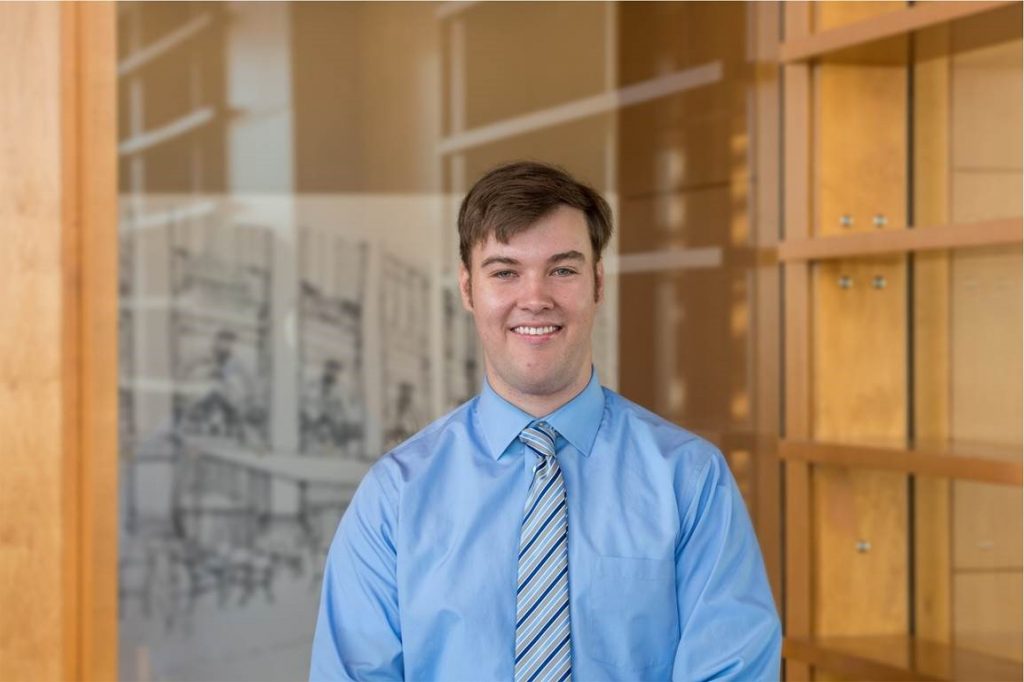
What building evoked a strong reaction from you recently—either positive or negative?
Embassy of the Netherlands in Berlin by OMA. The building’s interior spatial relationships are truly remarkable.
What is the last book you read?
The last book I read was ARE Review Manual: Architect Registration Exam
Studying for the exams right now and still many pages to go!
How did you discover your passion for architecture?
I was always the creative type. I loved building towers out of anything when I was younger (dominos, cards, pots, Lincoln Logs, etc.) and attended art classes on the weekend. In high school, I took a few art and engineering classes for my free electives. I really enjoyed the act of making but wanted the creative freedom offered by the arts. From there, it seemed like the only logical step was architecture. I toured Virginia Tech and saw the endless number of messy models and hung drawings. It just felt right…. it felt like home.
What is your favorite thing to do to relax?
I love walking around the city or going to a new place to photograph. My best friend and I would do this often to escape the rigors of studio. Not only is it relaxing, but it a great way to reconnect and brings out a different side of your creative spirit.
What advice do you have for aspiring architects?
You can always learn from someone else’s experiences. Open yourself up experiences outside your profession, outside your family/friends, and outside of those with your same beliefs and views. The world becomes bigger this way, and so does your heart.
Kristin L. Jones, Associate AIA

What building evoked a strong reaction from you recently—either positive or negative?
The Sheikh Zayed Grand Mosque located in Abu Dhabi in the United Arab Emirates, it evoked a sense of wonder and peace. Mosques are sacred spaces that allow for contemplation and prayer. It was an honor and a privilege having the experience to respect the cultural significance and history of this building.
What is the last book you read?
Such a Fun Age by Kiley Reid
How did you discover your passion for architecture?
In 2010, I attended the SoCal NOMA Project Pipeline Summer Camp. I was exposed to architects of color that were doing groundbreaking projects without compromising their cultural identity and it showed me that I could be apart of this community.
What is your favorite thing to do to relax?
I enjoy going to a spa for the day and enjoying a nice meal with friends until we shut the restaurant down.
What advice do you have for aspiring architects?
Do everything over the top! Never allow yourself to limit your opportunities. That sports team? Join it. That language? Learn it. That person you admire? Tell them. That snack? Eat it. Look for options and never compromise.
Mert Kansu, Associate AIA
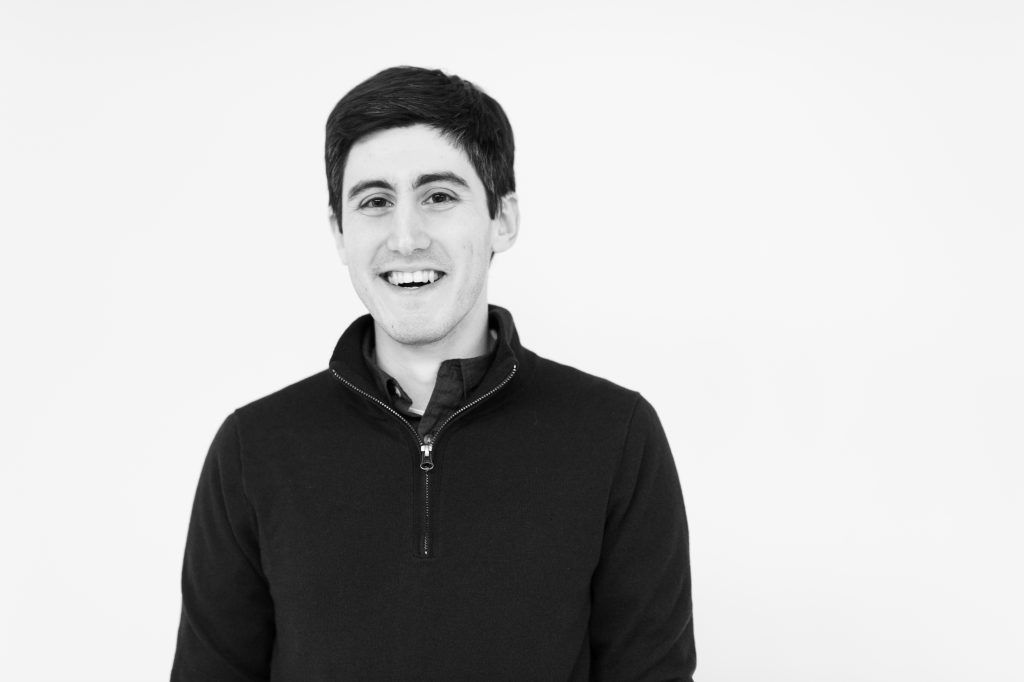
What building evoked a strong reaction from you recently—either positive or negative?
One of the most memorable moments I remember was when I entered Basilica La Sagrada Familia in Barcelona. I was moved by how light and shadow can activate so much. As I got to look around and appreciate the level of craft and construction, I became convinced that Gaudi thought about every aspect possible of architecture while designing this structure.
What is the last book you read?
How to Teach Quantum Physics to Your Dog, by Chad Orzel. I do not know quantum physics, nor have a dog. Luckily, you don’t need both to enjoy this book!
How did you discover your passion for architecture?
During my first studio projects. I understood that by blurring the borders between science and art, architecture was the right fit for me. I have a broad range interests and passions that I won’t want to constrain with a discipline that requires a narrow focus of practice.
What is your favorite thing to do to relax?
Spending time with my friends, the activity and purpose of gathering would not matter! If I’m by myself, working out, or finding a new hobby to do!
What advice do you have for aspiring architects?
Don’t let anyone scare you away by the workload of architectural school, do what you are passionate about and you will never get bored. Have patience, be curious and have fun!
Michael Lawson, AIA
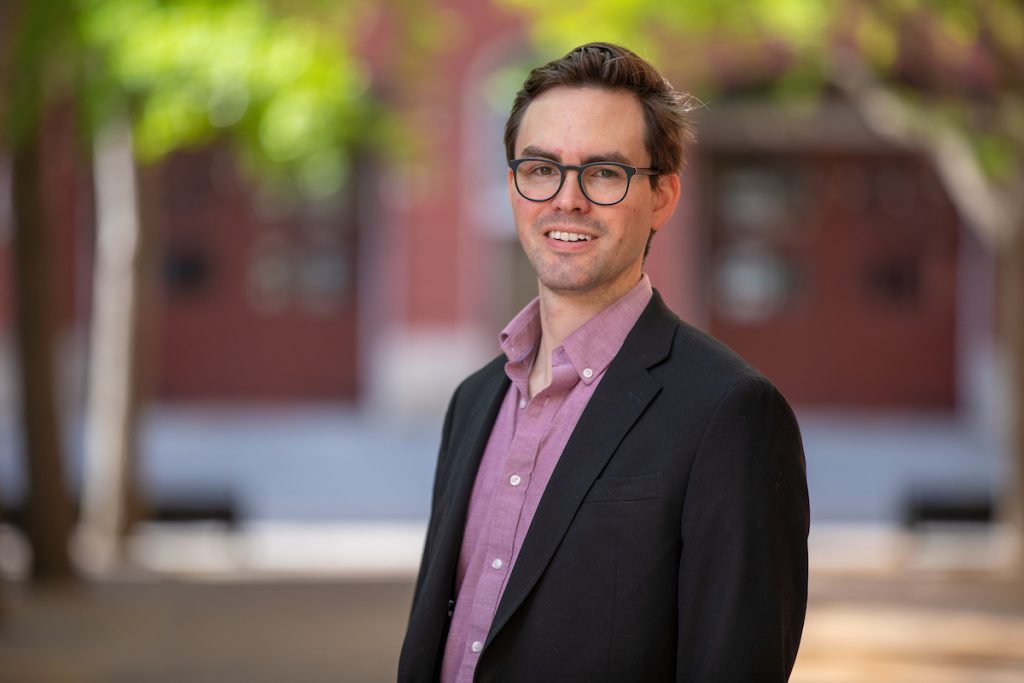
What building evoked a strong reaction from you recently—either positive or negative?
I feel very lucky to say that my home is that building. My wife and I bought it last year, and to have this place as my shelter during the pandemic has been quite a gift – there is enough room for me to set up an office with a view of the Blue Ridge Mountains, and a trail near my front door I can use to take a short break from work. The house was built in 1920, so it keeps giving in ways that are educational to say the least
What is the last book you read?
I just finished Player Piano by Kurt Vonnegut which was published in 1952 but illustrates a dystopian society run entirely by machines. It shows incredible foresight from Vonnegut, warning of the changing relationship between worker and machine, and how human behavior becomes the thing that is mechanized. It is absolutely worth a read today knowing how automation is sneaking into every aspect of human life.
How did you discover your passion for architecture?
I graduated with a degree in music at the height of the 2008 recession and ultimately desperately needed a job. Without knowing a thing about architecture, I eventually found a job in the mailroom of the firm where I am now employed as a Project Architect, but the time between then and now was filled with edification and discovery, and a good sabbatical to grad school somewhere in the mix.
What is your favorite thing to do to relax?
While I used to walk to and from work to clear my head, I’ve always found riding my bike or running to be great ways of allowing my brain to decompress.
What advice do you have for aspiring architects?
The path of an architect is one of continual education, learning things from the time you start until your career ends. The best architects out there always tried new things in acts of discovery as much for their own education as for the place they were making.
Randa Malkawi, AIAS
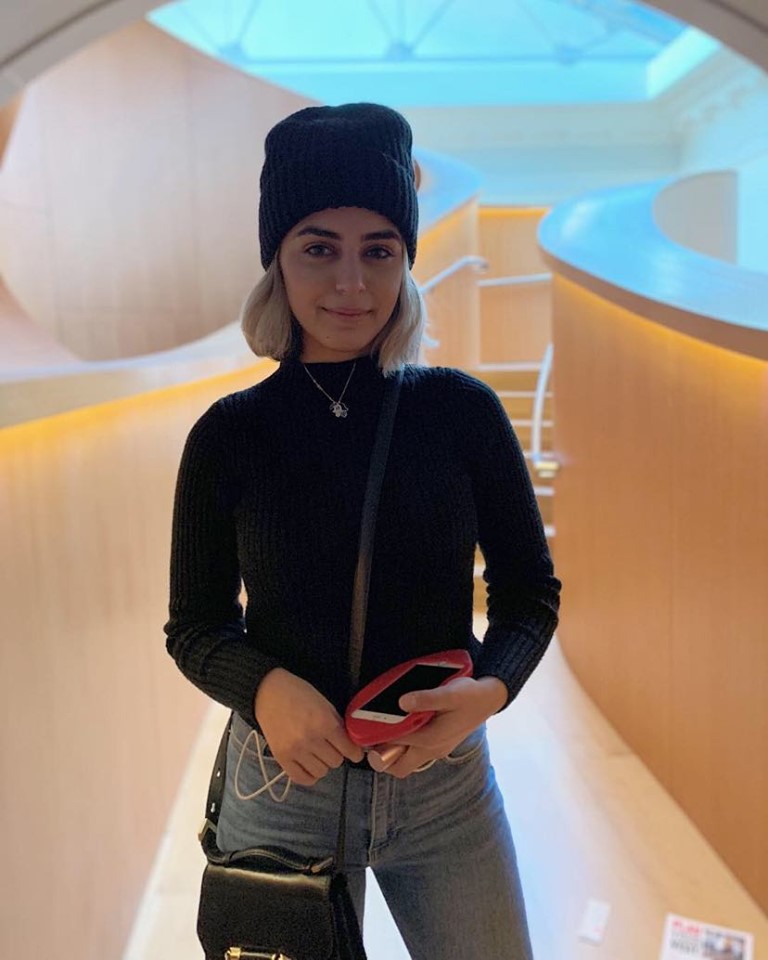
What building evoked a strong reaction from you recently—either positive or negative?
The Shed by Diller Scofidio + Renfro in NYC. Its facade is exciting and fascinating enough to spark an interest in the viewer and invite them to explore what lives inside the building. However, the interior of the building is quite disappointing and doesn’t satisfy the sense of excitement that its exterior portrays.
What is the last book you read?
Desert Tourism: Tracing the Fragile Edges of Development. The book contains a series of essays that are edited by Virgninie Picon – Lefebvre with Aziza Chaouni
How did you discover your passion for architecture?
In Toronto, at the intersection of Queen and College St. I looked up and was amazed at the clusters of buildings that framed the sky. The contrast between the rigidity of these architectural objects and the softness of the sky, and the ways in which these buildings would come to a stopping point while the sky would continue infinitely created a stark contrast that sparked my passion and interest.
What is your favorite thing to do to relax?
Walk around the city and make observations or explore art galleries and museums.
What advice do you have for aspiring architects?
Be confident and don’t be afraid to explore that one crazy idea that you have.
Gabriela Orizondo, Associate AIA

What building evoked a strong reaction from you recently—either positive or negative?
Does an entire ‘city’ count? On the positive, visiting Machu Picchu reminded me of the power and permanence of the built environment. On a negative note, it made me realize how fast-paced our profession has become, and how we don’t see new ‘buildings’ like that anymore.
What is the last book you read?
El Alquimista’ (The Alchemist) by Paulo Coelho
How did you discover your passion for architecture?
I still have this vivid memory of me staring at a construction worker mixing concrete by hand with a shovel. My mom was doing an addition to the back of our house, and I was allowed to sit and watch all day as they created something out of nothing. As the worker laid each block I just kept thinking, “this is real life Legos!” When the workers were done for the day, I went to my room and built two different Lego models to show my mom what the addition could look like. I didn’t know it then, but I guess you could say that was my first design presentation.
What is your favorite thing to do to relax?
Puzzles. I can easily let my mind go blank and spend hours putting a puzzle together. The last one I completed was a moon puzzle, and I am currently working on an earth one.
What advice do you have for aspiring architects?
Being a ‘good’ sketcher does not mean you should be an Architect, just like being a ‘bad’ sketcher does not mean you shouldn’t.
Allison Powell, AIA
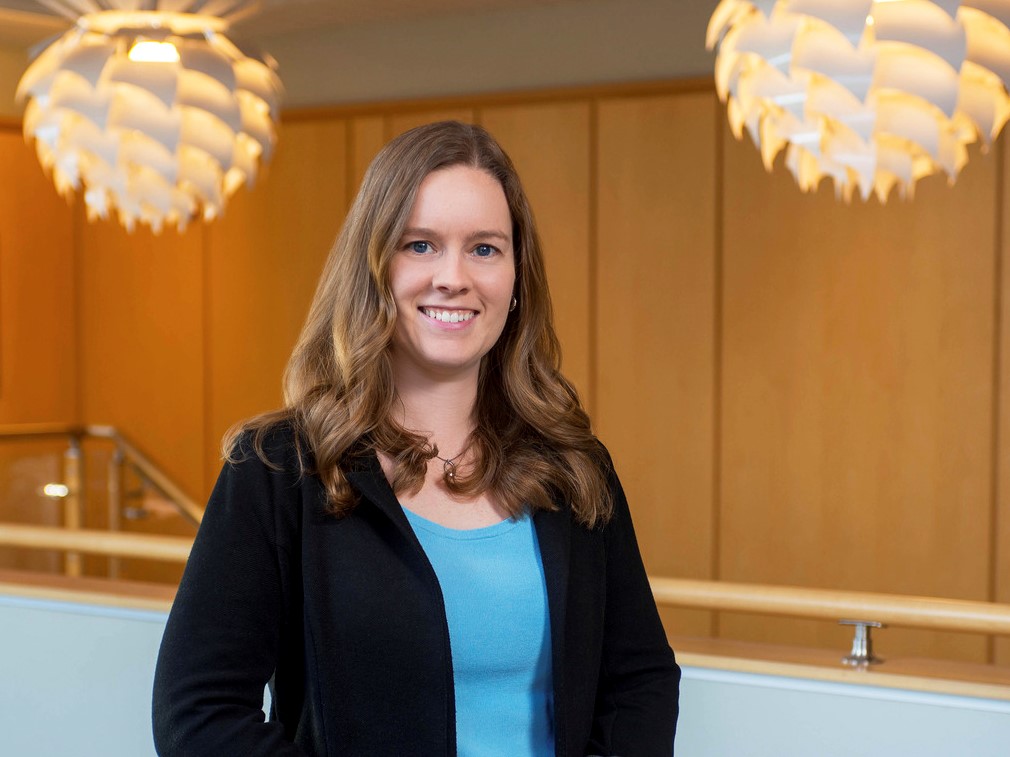
What building evoked a strong reaction from you recently—either positive or negative?
I was really impressed with the addition to the Beth Ahabah Education Building in Richmond by Shinberg Levinas. Located in the historic residential district of the Fan, it definitely stands out, but in a subtle way. I love the detailing of the façade. It is unique and telling of the building use while still remaining contextually proportionate.
What is the last book you read?
I’m currently reading The Tea Girl of Hummingbird Lane by Lisa See.
How did you discover your passion for architecture?
I remember finding house plan advertisements in some of my mom’s magazines growing up. I loved to study them, sketch them out, and then make my own changes to try and “improve” the designs.
What is your favorite thing to do to relax?
I love to take my dog for walks along the James River.
What advice do you have for aspiring architects?
Being an Architect is about much more than what you learn in school. There are so many different ways to excel in the profession whether through design, project management, or firm leadership. Hold on to your original “why”, but also don’t limit yourself. Figure out where your own strengths are and always look for opportunities to continue to grow.
Zach Robinson, Associate AIA
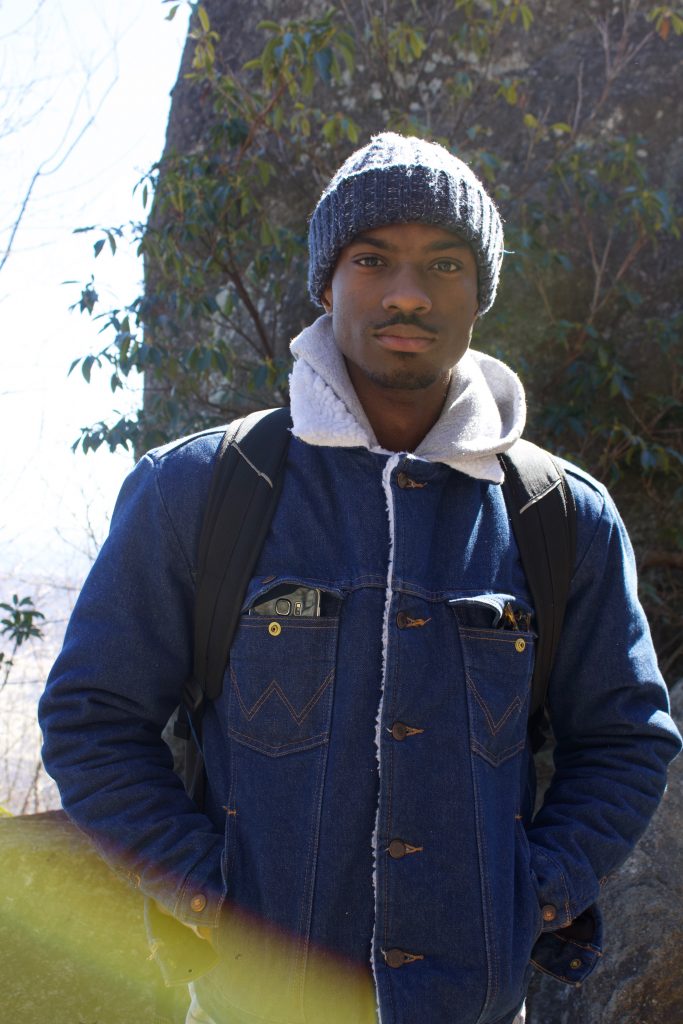
What building evoked a strong reaction from you recently—either positive or negative?
The Great Pyramids – the only surviving of the 7 wonders.
What is the last book you read?
When Rocks Cry Out – Horace Butler
How did you discover your passion for architecture?
I was playing hide and seek with my father frequently. So I designed my own space to hide and he couldn’t find me, legitimately. Humbly, it was a masterpiece, lol. He sat me down and explained to me that he never had a space of his own as a child, and I learned then that everybody doesn’t have the privilege to have their own space. Since I enjoyed it so much, I wanted to do my part to create spaces for others to enjoy. Hence architecture, and then my second degree in Urban Design.
What is your favorite thing to do to relax?
Read, sleep, eat, laugh, feel the sun on my face, cry, yell. It’s all pretty relaxing if I just breathe and allow my self to be present for a few seconds.
What advice do you have for aspiring architects?
Have fun protecting the health, safety, and welfare of the public.
Jacob Sherry, AIA
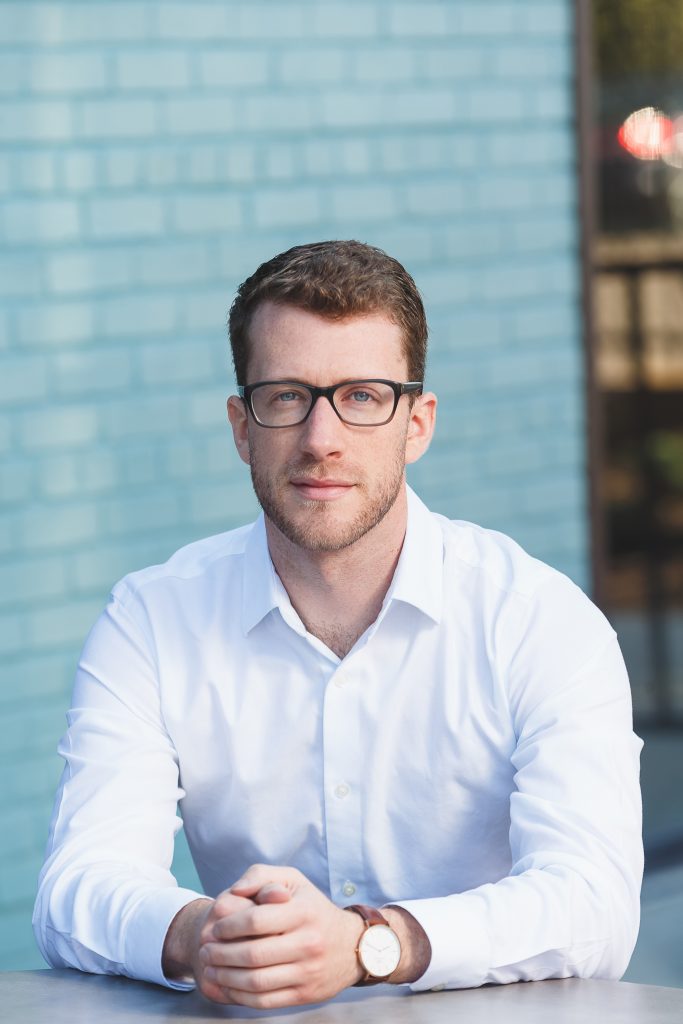
What building evoked a strong reaction from you recently—either positive or negative?
The Glenstone Museum in Potomac, Maryland by Thomas Phifer and Partners. I recently visited on my 29th birthday, an abnormally beautiful December day, and was truly inspired by simplistic but thoughtful use of materials and forms. It has always been a dream of mine to design & build a gallery and I hope to be fortunate enough to have a similar opportunity to design a space so elegant, materialistic, and rooted in nature.
What is the last book you read?
The Fountain Head by Ayn Rand. I felt like this was a must-read as an artist, architect, designer. It took me a long time to get through it but I’m glad I did. Honestly, I didn’t love the book because the overall motif became apparent about halfway through, and then it just felt like a chore to finish the rest of the book. It was a lot of words and pages for what I started to find as a redundant theme. All-in-all, reading it invoked some great internal thought on the pursuit of design and success, so I’m glad to have experienced it. I want to watch the film now to see how it holds up to my mental imagery.
How did you discover your passion for architecture?
I took some technical drawing classes in middle school and high school where I first discovered my love for a drawing board and T-square. We would draw axonometrics of tools & parts for machines and I became very proficient at it quickly. Through that workshop class, I was also introduced to designing and building sets for the plays & musicals at the school where I grew my love for building/creating. I thought this meant I wanted to be an engineer but after a few college visits, I became bored when I realized my artistic side was being neglected. I was then suggested to look into Architecture and it was the perfect fit of creativity, art, and technicality.
What is your favorite thing to do to relax?
I’m always on the move whether it be design related, YAF, ELA, golfing, playing sports, working in my garden, training jiu-jitsu, yoga, going to see live music, and so on…. But when I do slow down it is typically for some local food, beers, and hanging with friends.
What advice do you have for aspiring architects?
You are and will always be your own best advocate. Take chances and don’t be afraid to fail. Find what is important to you. What excites you. What you like, what you don’t like. Allow this to motivate & challenge you through your entire pursuit. Keep note of it on a regular basis [in an iPhone note, a sketchbook, a post-it note on your bedroom wall, in your wallet/purse]. It will likely [should] change and evolve, but its motivating presence will remain the same if what you wrote down is of your truest self. Learn to incorporate it into your work, your leisure, your everyday life. And enjoy the journey!
Matt C. Stevison, Associate AIA

What building evoked a strong reaction from you recently—either positive or negative?
Santiago Calatrava – World Trade Center Transportation Hub. It evoked the grandeur and scale of a cathedral and was one of the most ethereal and aspirational buildings I have recently had the pleasure to experience.
What is the last book you read?
Hillbilly Elegy – J.D. Vance
How did you discover your passion for architecture?
I always wanted to be involved with Architecture as far back as I can remember. That goal was cemented for me in 6th grade when my family took us to see Fallingwater.
What is your favorite thing to do to relax?
Ski, Spend time at my cabin, Cook outdoors
What advice do you have for aspiring architects?
This is more for architecture students. School is great for teaching people to think and speak like designers but the business and construction aspects of architecture tend to be glossed over and are arguably more important in the real world. If one cares about design, understanding how things are budgeted and built, and how a business needs to function to execute your good ideas is tremendously important. Spend some time taking business and construction management classes, intern for a construction company, and read books on these topics. It will set you up for more success once you begin work at a practice.
James Vidoni, Associate AIA
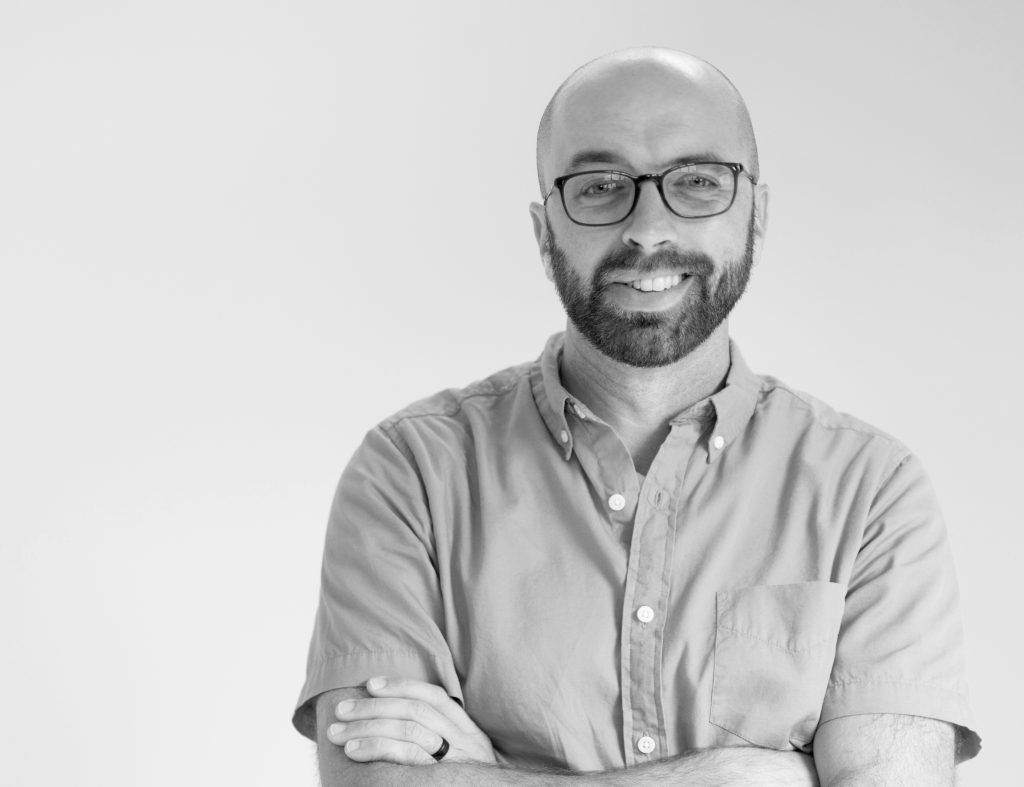
What building evoked a strong reaction from you recently—either positive or negative?
On a recent trip to Chicago, I stumbled upon the Apple store by Foster + Partners. It is simultaneously a pavilion, a plaza, and a room. Large structural glass sheets soften the edge of the building, blurring the line that separates the interior and exterior. I was surprised by the simplicity of the idea and the execution of detailing.
What is the last book you read?
Currently reading The Secret Life of Trees by Peter Wohlleben, an interesting account of how tree’s sense, how they communicate, and how they work together to survive. Also reading The Nature and Art of Workmanship by David Pye, this is a great read for anyone who is interested in gaining a better understanding of craft. Pye, an architect, and woodworker has a unique understanding of the difference between risk and certainty in design and manufacturing.
How did you discover your passion for architecture?
Through Making. Over the course of my adult life, I’ve lived in different parts of the country and had various jobs. I found a common thread that over the years that motivated me. I enjoyed making things that came from an idea. In some way, my passion for architecture came through life experience, through work, and searching for a career that would allow me to continue to make.
What is your favorite thing to do to relax?
When my children are awake we spend much of our time outside, there is a park nearby with several hiking trails and a meandering stream. This is where my family goes for fun and relaxation. When they are asleep, I enjoy a good IPA and carving wooden spoons.
What advice do you have for aspiring architects?
As you transition from an education to the practice of Architecture, continue to study and seek out the aspect of Architecture that moves you. Bring your findings and desire into your work.
